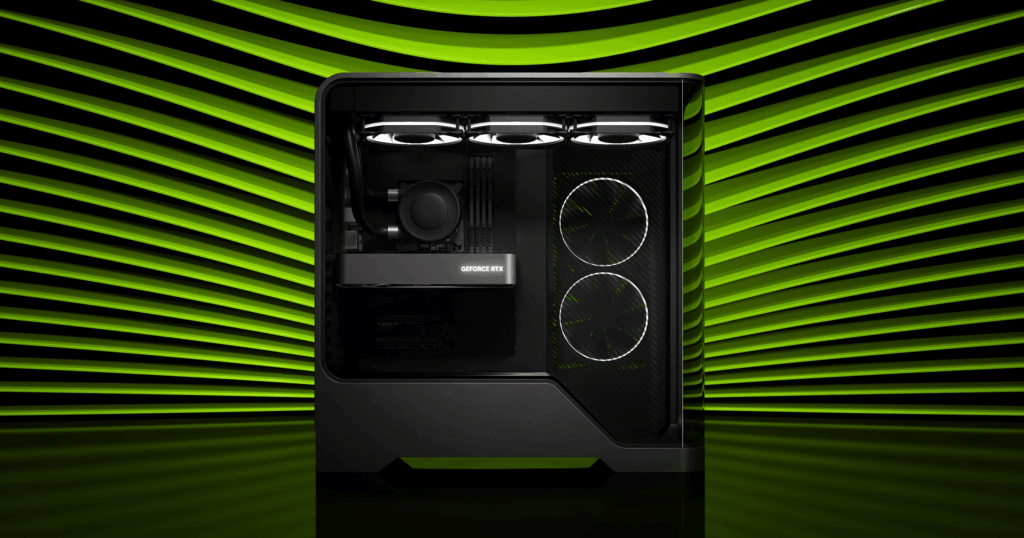- The GPU carries an MSRP of $299 and features 8GB of VRAM (a specification generating significant debate)
- With AMD reportedly preparing to unveil its competing RX 9060 XT on May 21, the upcoming week promises major developments for budget-conscious gamers
Nvidia has officially confirmed that its RTX 5060 desktop graphics card will hit retail shelves on May 19, coinciding with the release of its laptop counterpart.
The announcement, initially spotted on X (formerly Twitter) by VideoCardz, confirms previous speculation about the launch date. Nvidia had already disclosed the $299 price point and technical specifications when it introduced the RTX 5060 Ti earlier.
Starting May 19 at 9 a.m. Pacific Time, GeForce RTX 5060 graphics cards, desktops, and GeForce RTX 5060 Laptop GPUs will be available from our partners and retailers worldwide.#GeForceRTX50 pic.twitter.com/VLA9bZUWRW
— NVIDIA GeForce (@NVIDIAGeForce) May 6, 2025
While the RTX 5060 Ti launched with both 16GB and 8GB variants, the standard RTX 5060 will only be available with 8GB of video RAM—a decision that has sparked considerable controversy within the PC gaming community.
Similar to the RTX 5060 Ti release strategy, Nvidia will not produce a Founders Edition of this graphics card, with availability limited to third-party manufacturer versions.
The previously revealed specifications show the RTX 5060 contains 3,840 CUDA Cores, representing a 17% reduction compared to its Ti counterpart. Clock speeds and other technical aspects remain relatively similar, though the standard model lacks the 16GB configuration option. Power consumption is notably lower at 145W versus the Ti’s 180W—a potentially significant factor for users with limited power supply capacity in their gaming systems.
Analysis: Memory Constraints and Interface Limitations
The RTX 5060’s 8GB VRAM allocation presents the most obvious concern, as discussed in previous coverage. While this memory capacity has often been defended as sufficient for 1080p gaming, independent testing has demonstrated that even at Full HD resolution, numerous contemporary games encounter memory bottlenecks with 8GB of VRAM, resulting in substantial performance degradation.
Nvidia’s RTX Neural Texture Compression technology, introduced with the Blackwell generation, theoretically extends effective VRAM capacity. However, widespread game support for this feature remains distant, limiting its practical impact on current performance limitations.

The $299 MSRP represents the RTX 5060’s primary appeal—assuming third-party cards actually maintain this price point. Budget-conscious gamers may view this as an acceptable compromise despite its technical constraints.
A critical consideration emerges for users without PCIe 5.0 compatible motherboards. When VRAM capacity proves insufficient, the graphics card accesses system RAM through the PCIe interface. Nvidia’s decision to limit all RTX 5060 models to half the available PCIe lanes compounds this issue significantly. While PCIe 5.0’s exceptional bandwidth remains adequate even when halved, this restriction creates genuine performance bottlenecks on PCIe 4.0 systems and even more severe limitations on older PCIe 3.0 platforms.
The RTX 5060 Ti 16GB largely avoids these complications through its expanded memory capacity, rarely needing to access system RAM. Similarly, the RTX 5070 benefits from both its 12GB of VRAM and Nvidia’s decision to maintain full 16-lane PCIe connectivity on that model.
Ultimately, users without modern PCIe 5.0 motherboards face potentially significant performance penalties with any 8GB RTX 5060 variant. Additionally, actual retail pricing may exceed MSRP, as observed with the RTX 5060 Ti 8GB currently selling approximately 10% above its recommended price in the US market.
This suggests a realistic price expectation of $330 (around £250/AU$510) for base RTX 5060 models, potentially reaching $350 or higher for premium variants. At these price points, given the performance concerns, potential buyers may approach these cards with greater caution.
Historically, Nvidia’s xx60 series has represented their most popular consumer segment, though this generation’s success appears less certain—particularly given the ironic requirement of cutting-edge motherboard technology to maximize performance from this supposedly budget-friendly GPU.
The competitive landscape adds another dimension, with AMD’s RX 9060 XT rumored for announcement just days after the RTX 5060’s release. While AMD’s offering may also include 8GB variants alongside possible 16GB models, final specifications remain unconfirmed. This impending lower-mid-range market confrontation has captured significant attention among hardware enthusiasts and budget-conscious gamers alike.

